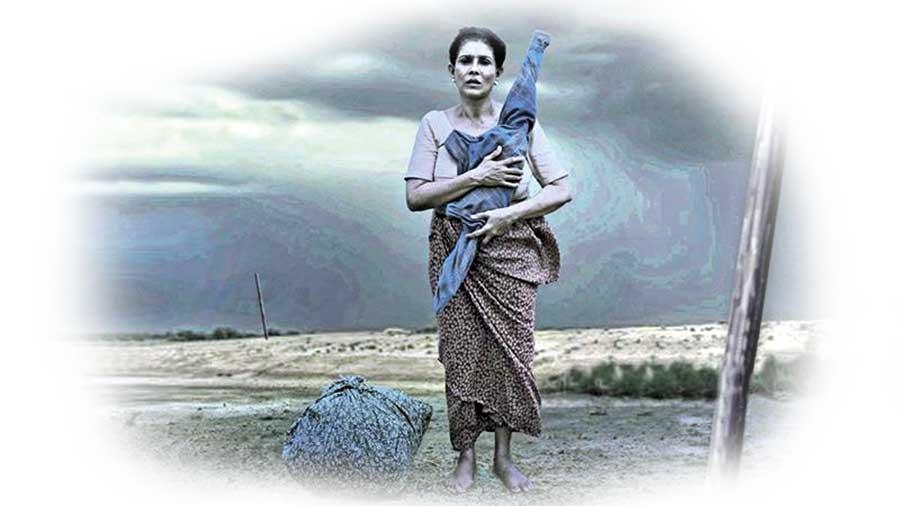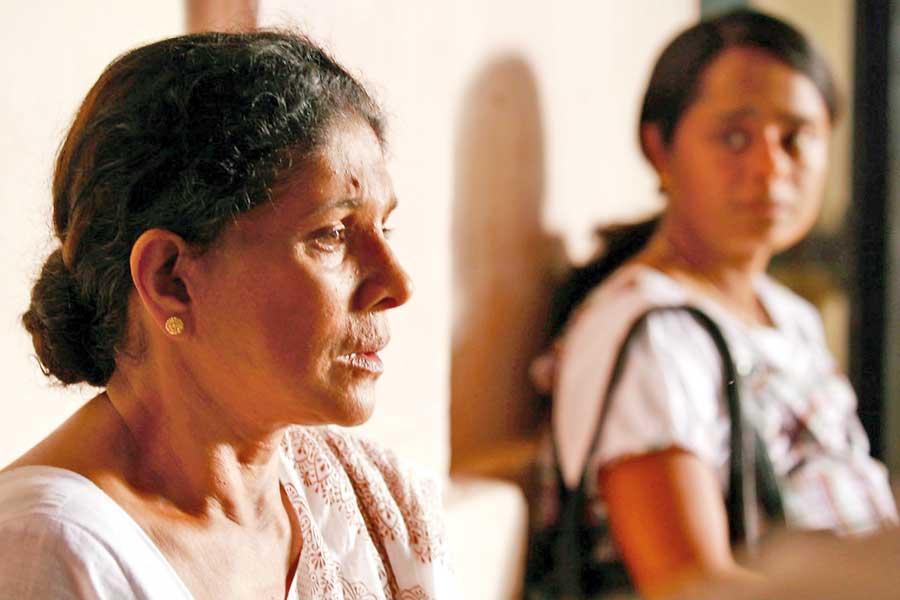Reply To:
Name - Reply Comment

Paangshu, Visakesa Chandrasekaram’s second feature, brings in a new dimension to Sri Lankan cinema by rediscovering old, nearly forgotten values. It has a degree of cinematic subtlety uncharacteristic of our  new generation filmmakers.
new generation filmmakers.
This quality was noticeable in ‘Sathpethi Kusuma’, his first feature which explored a love triangle from an unusual (gay-heterosexual) perspective.
But this conclusion is drawn from the filmmaker’s stylistic approach, rather than from his themes.
Instead of talking of a new dimension, we should call it rediscovering an old dimension – the almost meditative mix of lyricism softened realism and poetry that was so characteristic of Lester James Pieris and Satyajit Ray, followed by the ideologically tempered work of Dharmasena Pathiraja (and occasionally in the work of outsiders such as Sugathapala Senarath Yapa) in Sri Lanka; in India, many notable filmmakers took this path including Shyam Benegal.
"This is going back via Lester and Rai to Italian Neorealism. The later virtuosity of Fellini and Antonioni makes us forget that early neorealism believed in camera movements and angles a child could follow. The visual innocence of this kind of cinema appeals to the child in us"
When Lester James Pieris created an independent cinematic idiom for Sri Lankan cinema with Rekhawa in 1956, and Rai did the same for Indian cinema with Pather Panchali in 1955, both knew what the Italian neorealists were doing in Europe (Lucino Visconti’s Ossessione made in 1943 is now generally accepted as the first neorealist movie). The quality that struck them as the most important in this new style of European filmmaking was the inherent humanism, and every movie they made reflected that endearing quality in simple, straightforward cinematic terms.
Sri Lankan cinema, battered during the turbulent 1980s by ethnic hatred, Milton Friedman economics, and a post-1980s generation of film goers who failed to see movies as an essential part of the country’s culture, leave alone an art form, was left adrift.
This void was filled by a new millennial generation of young filmmakers whose ideas and stylistic approach reflected the ruthlessness and amorality of the times and culture which created and nurtured them. This post-modernist-influenced generation focused on sex, and the absence of it in the old cinema was derided as puerile and backward. They failed to notice that both American and European filmmakers were gradually giving up on sex scenes and nudity (seen as superfluous when so much of it was available for free on the internet) and concentrated on storytelling instead.
The idea that scenes of violent sex would make our films ‘mature’ was hatched in some post-modernist witches’ brew, while the old humanism and lyricism were thrown out of the window. One does not notice the absence of sex and nudity in Paanshu.
The story doesn’t require it, and this falls into the great meditative film making tradition initiated in South Asia by Lester James Pieris and Sathyajith Rai.
It’s very easy to get hated for writing on behalf of or against sex, so let’s make it clear now that this isn’t the usual Victorian argument that absence of sex makes good art. Rather, it’s an evaluation of the hypothesis that onscreen sex will earn filmmakers a standing ovation from audiences who have seen it all on screens big and small before our auteurs got round to it. It’s a little too late for that now.

This is why Visakesa Chandrasekharam’s work breathes new life to our cinema in the form of a vintage cinematic idiom at a critical moment. This isn’t an argument for a puritan cinema. Instead, let’s talk of a good example of cinematic storytelling where all non-essentials have been left out, and that includes violence, too. We see the abduction from far away, and the subsequent horrors have been left out. But the emotions remain razor-sharp.
This film dares to look old fashioned, without frenetic cuts. From the very first frame, you are connecting with contemplative shots and grammatically orchestrated camera movements (meaning grammar of film). The beauty of these movements is that they are mostly static, and yet create the impression of movement.
This is going back via Lester and Rai to Italian Neorealism. The later virtuosity of Fellini and Antonioni makes us forget that early neorealism believed in camera movements and angles a child could follow. The visual innocence of this kind of cinema appeals to the child in us.
"The idea that scenes of violent sex would make our films ‘mature’ was hatched in some post-modernist witches’ brew, while the old humanism and lyricism were thrown out of the window. One does not notice the absence of sex and nudity in Paangshu"
It’s quite exceptional when you walk out of a contemporary Sri Lankan film screening without a headache, and this was one of those exceptions.
The story isn’t unusual. A tale of a mother’s refusal to believe that her politically radical son, abducted one night and never seen again, is still alive after several years is familiar enough. It’s the treatment that is unusual. Instead of melodrama, the filmmaker (who wrote the script himself) defuses the tension. He takes us through this morbid history without burning us out. The film’s message of reconciliation and forgiveness stands out in a culture of savage retribution and revenge.
Nita Fernando is so good as the mother relentlessly in pursuit of her son’s abductors that in this role she epitomizes all women who have lived that nightmare. Jagath Manuwarna is striking as the young lawyer who takes her case, and Nadee Kammellaweera, as the pregnant wife of the accused soldier with divided sympathies, reminds us again of the depth of the acting talent we have always had. It’s the filmmakers who have fallen short. In this quiet, poignant film, Visakesa Chandrasekharam gives us hope of a new direction for Sri Lankan cinema.
